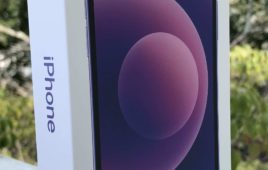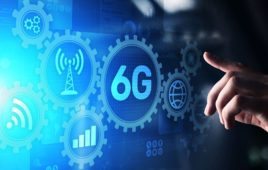Sky watchers in the continental United States will be treated to their first total solar eclipse in nearly four decades Monday, with a path of totality that stretches across fourteen states. But the event is more than just a special astronomical phenomenon – it’s also shaping up as a perfect storm to test stateside carrier networks.
Many of the best viewing spots located in rural areas in states like Oregon, Idaho, Montana, Wyoming, Nebraska, Kansas, and Iowa – regions that tend to appear as white spots on colored carrier coverage maps. So, in the run up to Monday’s eclipse, carriers have been working to boost coverage.
As in other high-density event scenarios, tier-1 operators told CNBC they have deployed field equipment like Cell-on-Wheels and Cell-on-Light-Trucks to help reduce network strain. AT&T reported boosting coverage in 10 towns in the path of the eclipse, while Sprint and T-Mobile deployed equipment in four towns, and Verizon gave a boost to three towns. Sprint and T-Mobile both told the outlet they’re adding capacity to existing towers for the event as well.
There’s good reason for all the preparation.
According to IEEE Senior Member and Navigant Director Shawn Chandler, physical attendance for eclipse viewers could surpass 200 million people. And those, he noted, will all be using the network in a synchronized timeframe.
“Notably aligned with the event, the amount of data that will be exchanged in our communications infrastructure will be gargantuan. If every person takes just one average resolution photograph and shares it, the amount of data exchanged is then hundreds of millions to a few billion MB uploaded to the network, spread out over time of the entire event,” Chandler observed. “During the eclipse, usage behavior will be well above normal estimates with live streaming, and density of subscribers could be a factor of 100,000 times or more above normal conditions.”
Chandler said the everyman might assume that today’s 4G networks would be able to handle the data load easily. But, he explained, traffic is only one element of network scalability – in this case, timing and integration with legacy rural networks will complicate things.
“In all network systems, the flexibility of the system is tightly constrained when traffic between nodes increases exponentially. Traffic distribution between base station sites, and metrics such as traffic distribution over a time average, and usage per subscriber per month, are all commonly considered when allocating for quality of service. Generally, around 15 percent of the stations are modeled to carry 50 percent of the traffic,” Chandler commented. “Consider also that capacity of the network dedicated at the edge in many rural service territories could be limited by integration with legacy time-delay multiplexing networks still utilized today with a combination of circuit-switched and packet-based connections. As a result, there will be challenges nationwide.”
Even with all the carrier preparations, Chandler said eclipse viewers should expect that quality of service will temporarily drop.
But that’s for this go around. Chandler and Tom Coughlin, IEEE Senior Member and President at Coughlin Associates, said future networks will be better equipped to handle the surge the next time an eclipse rolls across the country.
According to Coughlin, improvements in the ability to recover signal from noise using advanced signal processing will strengthen network infrastructure. Additionally, technologies that allow radio spectrum to be split into more communications channels in a given area and adaptive technologies like MIMO and software-defined radio will boost network performance under pressure.
Looking ahead to the next generation of wireless networks, Chandler said the millimeter wave spectrum expected to be used in 5G systems will “provide 1000 times the capacity of modern 4G systems.”
For those who can’t get outside to take a peek or don’t have appropriate eyewear, NASA will be live streaming the eclipse from noon to 4 p.m. here.




